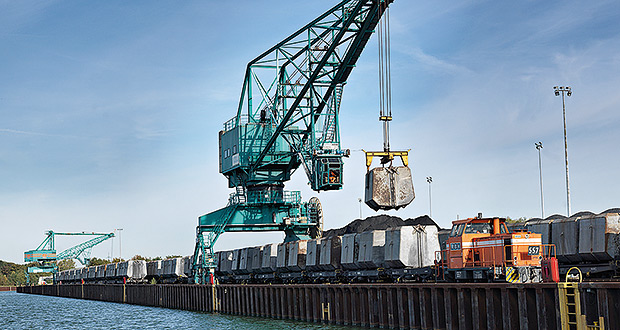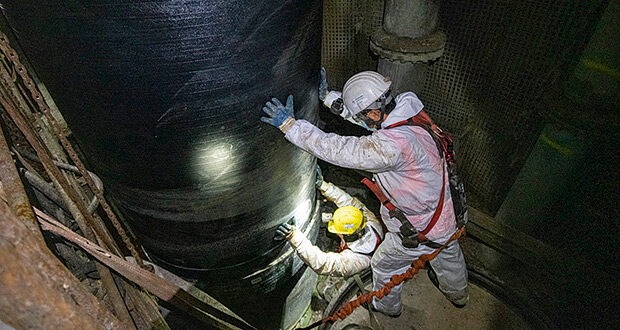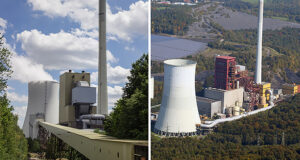It’s been two years since the last mines in North Rhine-Westphalia have been closed. On 21st December 2018 RAG miner handed over the last coal from the Prosper-Haniel mine in Bottrop/Germany, to Federal President Frank-Walter Steinmeier. Today RAG Aktiengesellschaft, Essen/Germany, has met all conditions to finally bid farewell to the underground world (Figure 1). “All of this in difficult times – and accident-free”, says CEO of RAG, Peter Schrimpf, praising his team. And the company is satisfied with the performances in 2020.
Also for the two mines in Ibbenbüren and Bottrop, which received assistance until most recently, the irrevocable farewell from the mine is now approaching, around two years after the shutdown of production, with the final deactivation of the pumps. While in Ibbenbüren the closure plan for leaving the rest of the mine was already approved in April, the mining authorities also issued this last approval in November for the Prosper-Haniel mine in Bottrop. With the approval for the closure plan procedures of the former Lohberg mine expected at the beginning of the year, RAG will come another step closer to the complete mining withdrawal and thus the implementation of the mine water concept in the Ruhr area because the site in Dinslaken is absolutely crucial in the RAG’s concept. “With this approval the mine water there can rise to a level of -630 m. This, in turn, is the prerequisite for enabling the mine water to spill over from Prosper-Haniel to Lohberg and no longer having to be fed into the Emscher river”, explains Schrimpf. In doing so, an important step is taken to completely free the Emscher of mine water by the end of 2021. The Emscher rebuild generation project can also be completed.
Apart from the mining approvals, the water permits for the raising and subsequent introduction of mine water into the receiving waters are now also entering a “stressful phase”. The mine water concept for the Ruhr area provides that in future mine water still only be raised from great depths at six locations with large submersible pumps and fed into the Ruhr, Lippe and primarily into the Rhine. In Ibbenbüren the mine water should go into the Aa via a mine water channel still to be built. Schrimpf: “We will create these processes openly and transparently. In the end it is about relieving as many river kilometres as possible of mine water and thus making a natural development of the waters possible.” The CEO of RAG attaches huge importance to the fact that the company is also available as a contact partner to citizens in the former mining regions even after the end of the coal mining sector. Schrimpf: “We’re here and will remain so. We will keep our word and tackle the impacts of mining in a responsible manner.”
To this end, RAG has restructured itself. There are currently just under 1,240 employees at RAG. In 2007, when the political decision was made to end the coal mining sector, the number of employees was 34,000. Almost 33,000 employees were laid off in a socially responsible manner. All those who were unable to transition into early retirement were offered new alternative jobs repeatedly. Around 160 former miners rejected all offers and filed a suit against RAG after compulsory redundancies. Schrimpf: “The behaviour of the colleagues really affected me personally. It shows a lack of solidarity. I have no time or sympathy. We will examine all available means of legal redress!”
The realignment of RAG also meant that the group had to part with business activities, e. g., from RAG Mining Solutions at the end of 2020. Since 2009 the company has marketed RAG mining equipment that is no longer required worldwide. Over 70 M € were generated in total. Schrimpf: “This was a further illustration of the excellent reputation German mining know-how and equipment enjoyed on an international level.”

Fig. 2. RAG Verkauf delivered the coal from the mines to the customer by train within a few hours. // Bild 2. RAG Verkauf lieferte die Kohle von den Bergwerken innerhalb weniger Stunden per Zug zum Kunden. Photo/Foto: RAG
On 31st December 2020 the former marketer of domestic coal and at one time the biggest German coal importer, RAG Verkauf, also ceased operation. For almost seven decades the company made a significant contribution to energy security in Germany (Figure 2). “RAG Verkauf always played a key role for the RAG Group”, says the CEO of RAG. “If RAG Verkauf was not able to market our coal, then the entire phase-out process of the German coal mining sector would not have been possible in a socially responsible manner. Because the necessary public funding was not available for the extracted, but for the sold tonnes of coal.” Since the middle of the 1990s, RAG Verkauf has also marketed international coal in addition to German coal and became an important coal importer, in 1998 it became Germany’s biggest coal importer.
The organisational optimisation of the property-related tasks is also making good progress. All activities, which are assigned to post-mining, such as the renovation of former mine areas or the cleaning of groundwater at former sites of coking plants, should be processed by RAG directly in the future. However, after the reorganisation the land development urgently required for new industrial locations in the former mining regions on the Ruhr, in Ibbenbüren and in Saarland remains a core activity of RAG Montan Immobilien. Schrimpf: “It makes a significant contribution to the structural change.”
At RAG the year 2020 was also characterised by corona. Schrimpf: “The pandemic showed us how vulnerable and fragile people, but also economic processes are. We were once again reminded of how important it is to support each other. Together we embraced the challenges and maintained the necessary business processes and at the same time were able to protect our staff.” (RAG/Si.)


